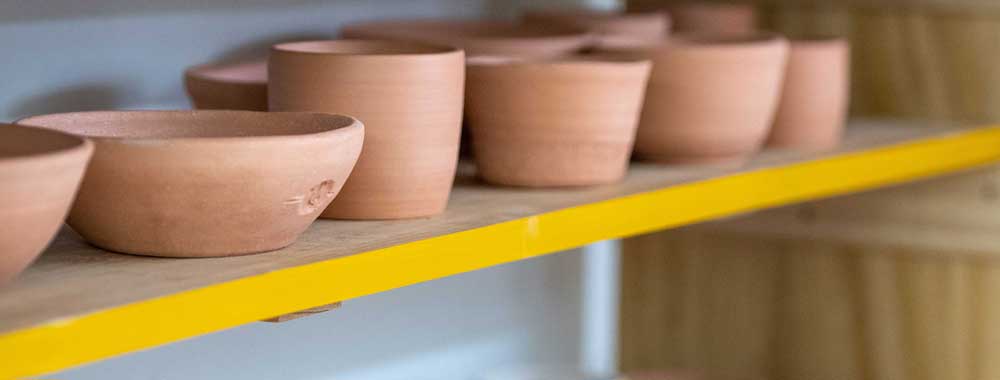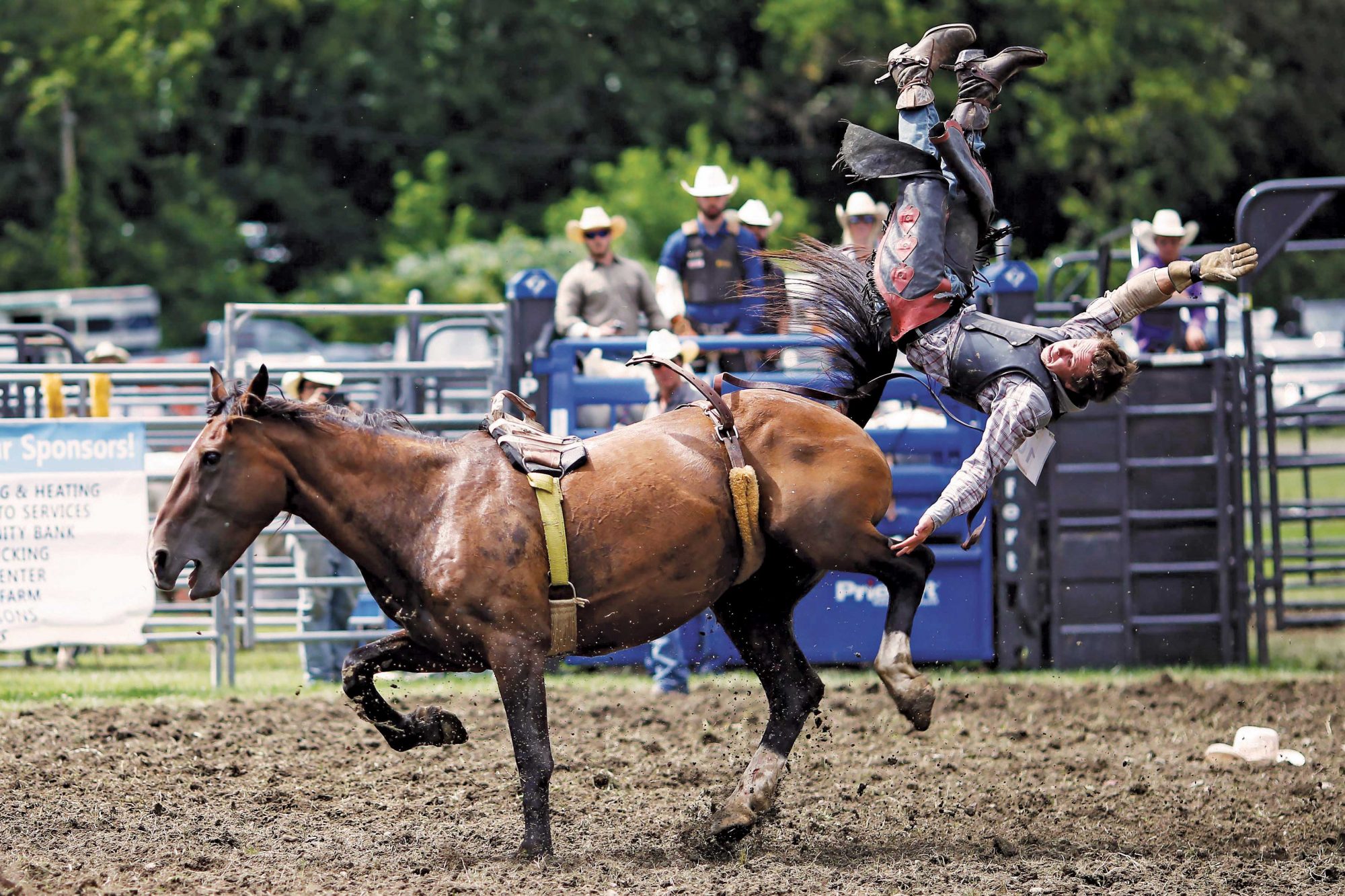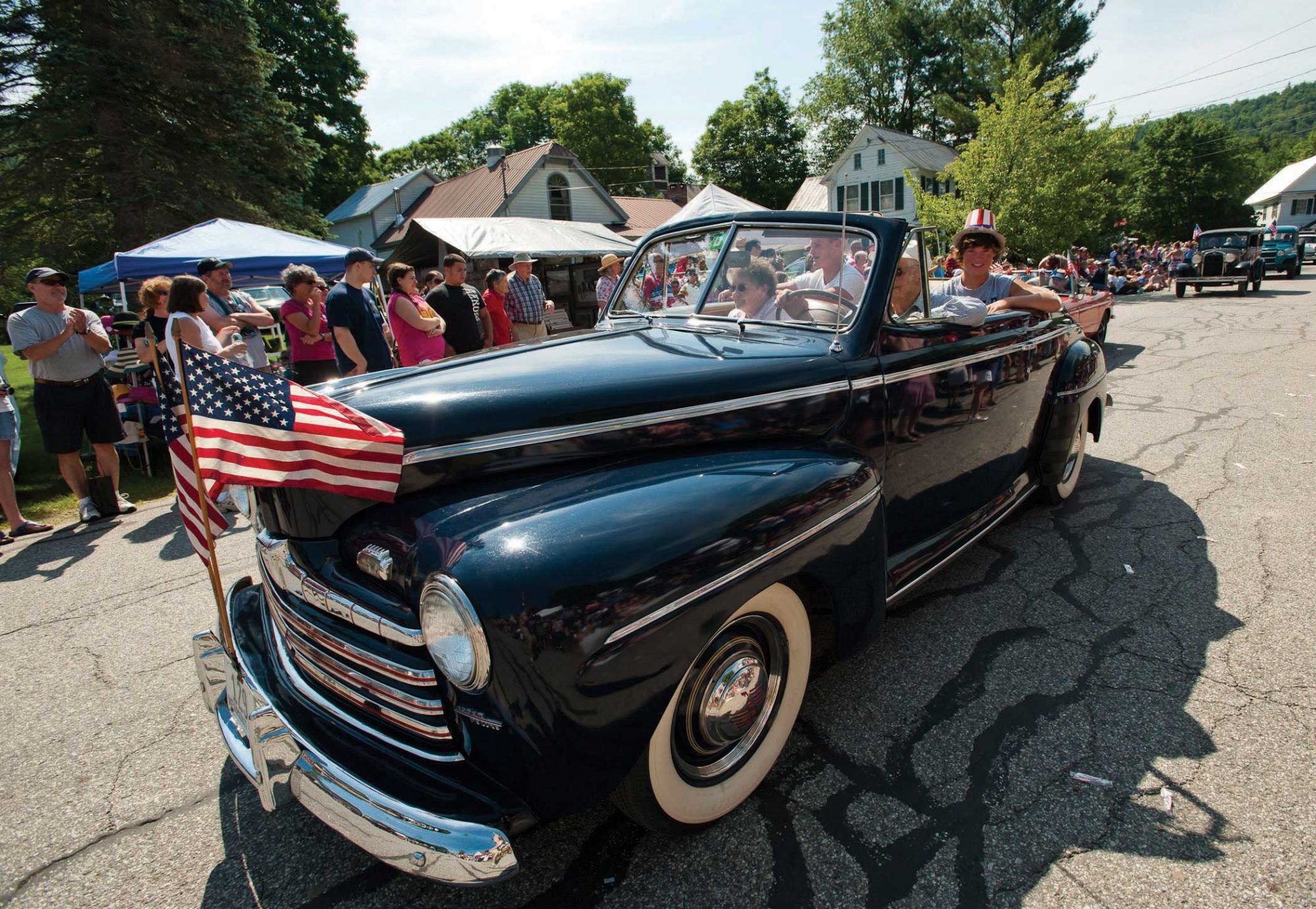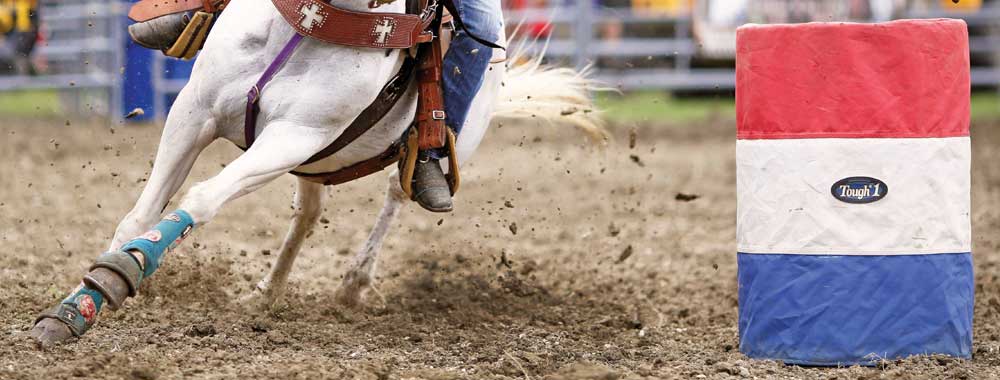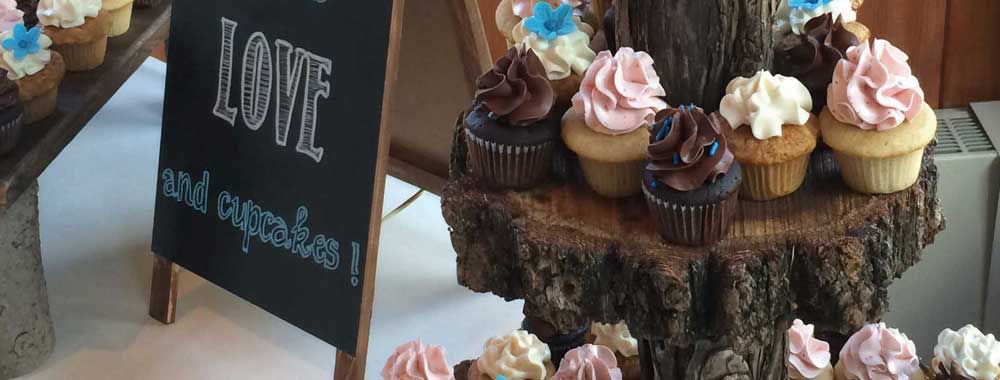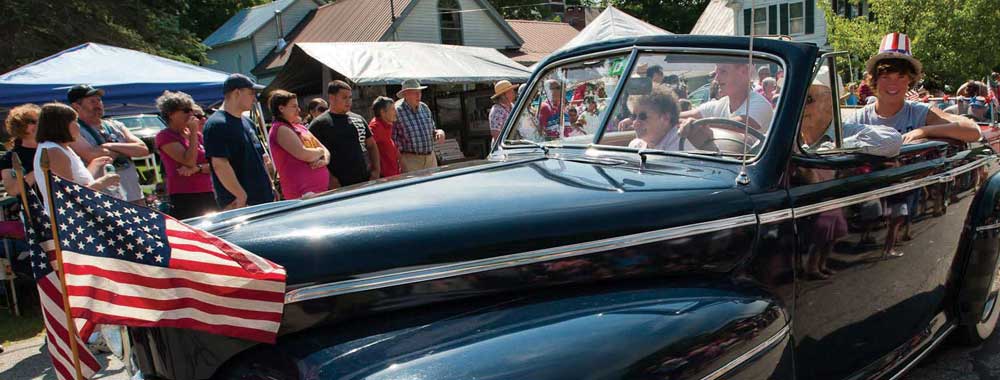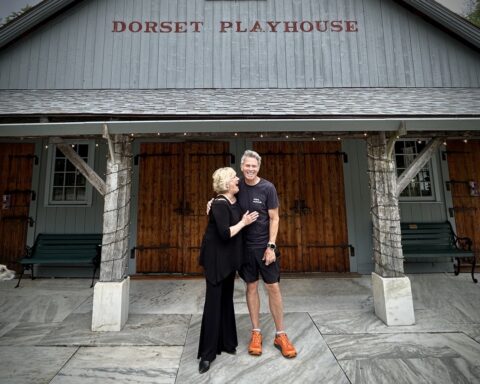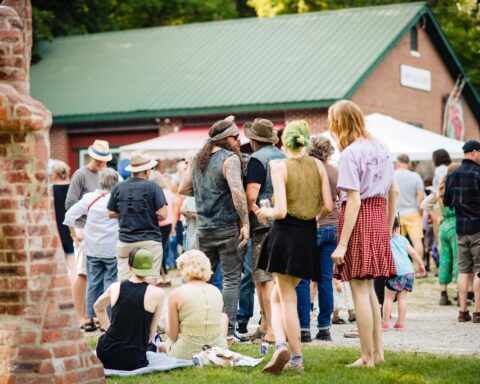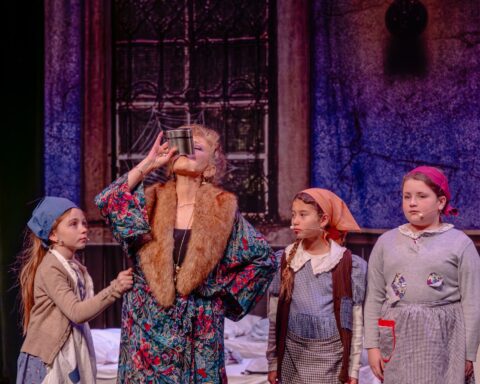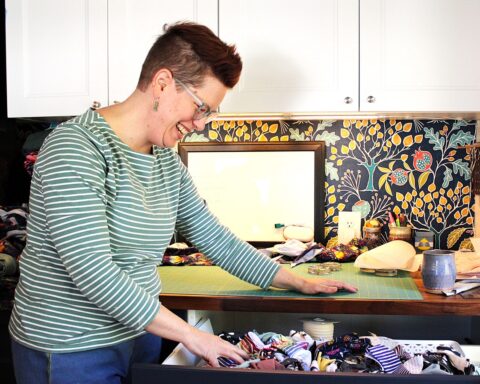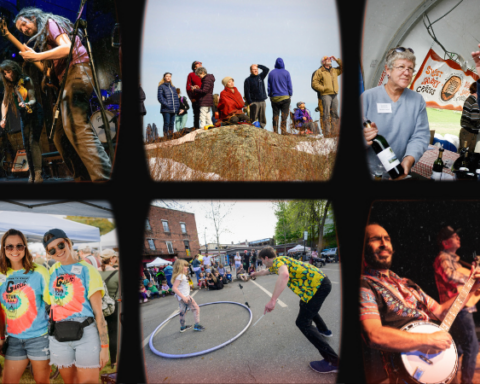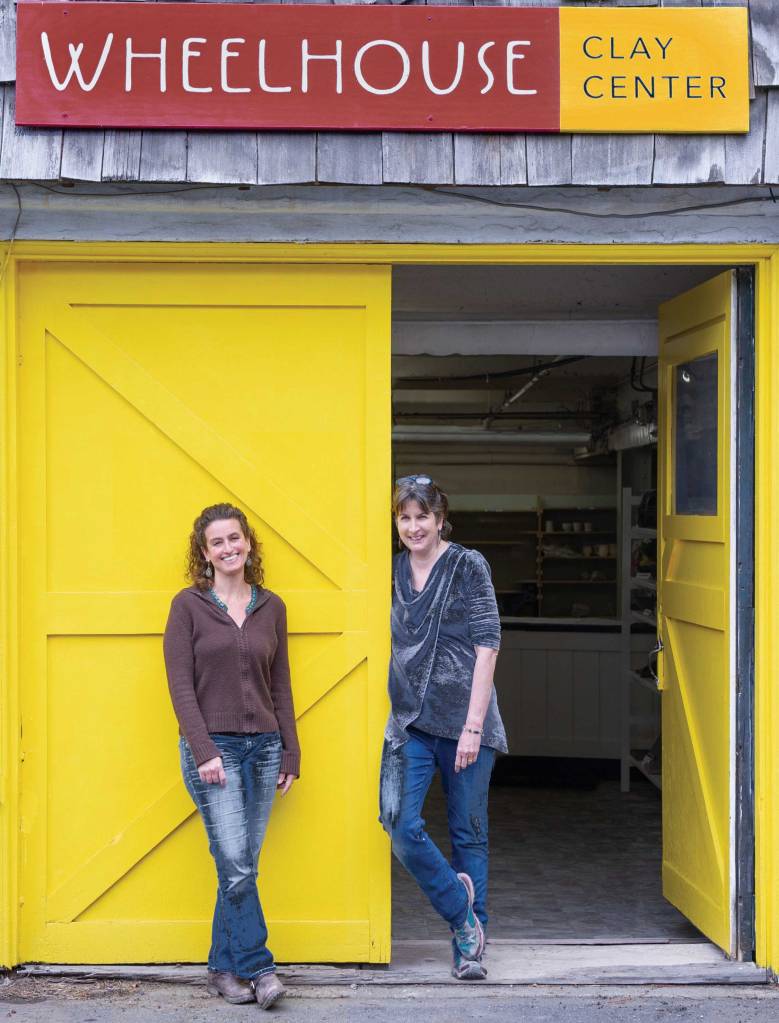
By Anita Rafael
BRATTLEBORO, VT.
Just two hours into my first pottery lesson, during my first class of beginner wheelwork with my teacher, Teta Hilsdon, co-owner of the new Wheelhouse Clay Center, I had made a bowl.
I threw it from a 2-pound lump of wet, slippery brown clay. By the third class, Teta [rhymes with Rita] had my five classmates and me making cylinders — that is, taller, narrower pieces that can be used as mugs, pitchers, petite vases, or pencil pots. In the fifth class, we were all making flat plates. Voila! I had a basic place setting — salad or soup bowl, drinking vessel and plate.
Being my own reluctant critic, I thought, OK, so what if the first bowl I made was rather thick, straight-sided and fat-bottomed? It wasn’t lopsided or droopy, and it was deep enough and essentially round. My cylinders stood a good 6 inches tall [OK, those first few looked a little torqued out], and, as it turned out, flat dinner plates were not as easy to make as I thought they’d be. But I made four dessert plates and a saucer!
By the end of the plate-throwing class, I had used up my first 25-pound block of material and was well into my second. Lessons were three hours long, so I was throwing more than one pot during each session, and seven days a week at Wheelhouse, there are hours and hours of “bench time” at no extra charge to hang out and practice throwing more things; plus, I ended up with a few pounds of material in my woefully wrecked pots bucket — all of which accounts for working that much clay.
At the final session, the eighth week, I packed up a big cardboard box with my colorfully glazed mismatched bowls, little plates and saucers, spoon rests, chopstick rests, vases and flower pots. [OK, some of the flower pots happened when I accidentally poked holes in the bottoms of things that were intended to be bowls.] Peering in at all the things I had made at the wheel was revelatory. Wait … am I now a potter?
Not quite, but I did find out that clay is my new yoga. It’s because, as with yoga, making pottery can move your mind, your senses and your muscles to altered states, sometimes unfamiliar, but not unwelcome.
One of my classmates at Wheelhouse, Linda Gifkins, of Wardsboro, Vt., who is a regular at Newfane Village Yoga, understood my reaction.
“I think that working on the pottery wheel feels both therapeutic and frustrating at the same time, like yoga,” she said. “I just had to learn to push my boundaries in trying a craft that was totally new to me.”
Not lacking artistic ability, Gifkins is a remarkably creative rug hooker whose primitive-inspired pieces are prized locally.
The new wheels in town

Wheelhouse Clay Center, located in a vast ground-level studio, celebrated its soft opening this past March. Because the studio is painted snow white all over, and with what seems like miles of natural pine shelving rising nearly to the ceiling, in addition to the shiny, eggshell-colored wooden floors, the space looks and feels like a SoHo loft.
Inside the 3,800-square-foot space, there is more than enough elbow room for a passel of potters to be working at once, while in the background, Amazon’s Alexa obediently shuffles her way through some vintage Simon & Garfunkel in between a little classic rock, a bit of Dylan, and the occasional J.S. Bach prelude.
The claystations up front with the garden view are where the co-owners of Wheelhouse craft side by side, pro-potters Hilsdon and Shari Zabriskie. Hilsdon and Zabriskie teach pottery classes and extend an invitation to all potters to host their lessons in Wheelhouse’s classroom space, too. Currently, Emily Wright, Sally Geldard-Hewes, Diane Elchin and others teach eight-week sessions, private lessons, frequent daylong workshops and monthly “three hours of fun with clay dates” called Clay Play.
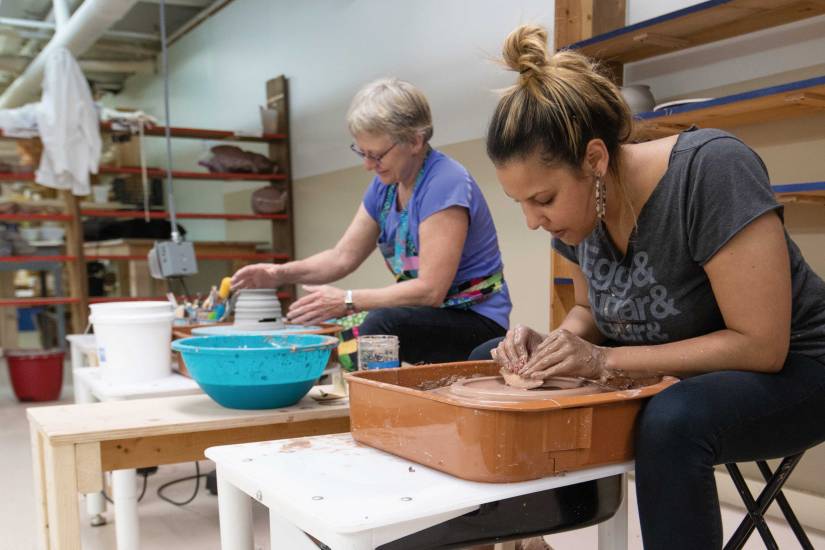
Along the side wall, and down the studio’s front-to-back central avenue, there are long plank shelves, properly labeled and organized with tools, supplies, pots in progress and finished pieces. There are big plywood tables, simple wooden benches and pottery wheels designated for the 22 craftspeople — wheelworkers, hand builders, and sculptors — who rent makerspaces at Wheelhouse month to month.
In the brightly lit far corner, there are six wheels, more shelving, and more tables and benches where merry bands of talkative students gather with their teachers to work on their projects. Not all the lessons at Wheelhouse are for clay virgins like me. One of Diane Echlin’s classes is called “Thrown and Altered,” where participants with advanced skills explore texture, applied elements, reshaping, faceting, fluting and other techniques.
Opposite the students’ zone, there is a broad and spotless white counter where everyone glazes their pottery, and a giant three-bay stainless steel sink for washing up. In another corner, Wheelhouse fires three electric kilns, usually to “cone six” temps, which is the toasty 2,232 degrees that produces brilliantly vitrified pieces. Day after day, one kiln or the other is being filled with new work from various potters, or emptied of their bisqued or finished pottery. Just inside the studio’s big, bright yellow double front doors, there is a wide gallery of signed merchandise for sale, hundreds of pieces that are either pleasingly utilitarian or purely decorative. And in all cases, these are works of art.
Hilsdon is a yoga teacher, and Zabriskie practices, too. During pottery lessons, they each naturally impart the link between the mat and the wheel. Like yoga, Zabriskie says, throwing always offers challenges and failures blended with the joy of incremental successes and rewards.
“But there is something about handling clay. I believe people find energy in the way it spins in their hands. That’s what hooks you into the practice,” she said. “Pottery is a practice.”
Now, here’s the inside baseball. Yoga is mystical, but during dozens of rookie-level classes, I often hathaed unenlightenedly with every pose and breath. Yet, after I graduated from Wheelhouse’s eight-session pottery 101 program, I was inexplicably self-assured and content just to be drinking chai from my sponge-glazed mug, eating cake off my celadon slip-decorated plate, and planting flowers in the pretty blue polka-dotted pots I made. That’s an awful lot of nirvana, right there. •

All the details
Wheelhouse Clay Center
48 Harmony Place, Brattleboro
802-490-2693
wheelhouseclaycenter.com
Anita Rafael lives and works in Wardsboro, Vt. Her feature articles on history, arts and culture, food, nature, people, and all things Vermont have appeared in various magazines and newspapers throughout Southern Vermont since 2007.
